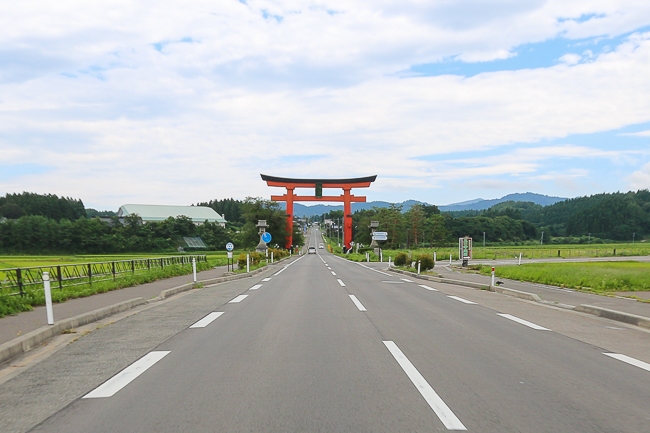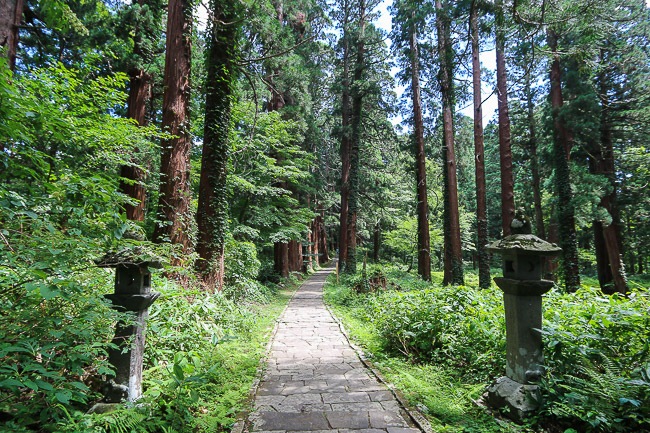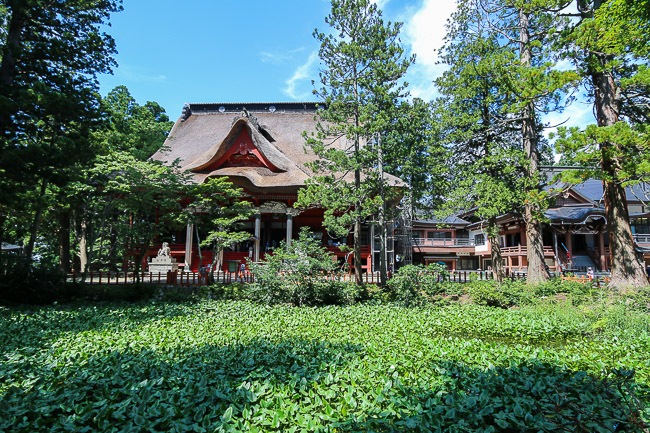The three sacred mountains of Dewa Sanzan
by Raina, staff writer of japan-guide.com
| previous post |
| next post |
2016/08/16 - The three sacred mountains of Dewa Sanzan

The three sacred mountains of Dewa Sanzan in Yamagata are made up of Haguro-san, Gas-san and Yudono-san. Together, they have been worshiped for hundreds of years. More recently, Dewa Sanzan has been designated as a "Japan Heritage" site, unsurprisingly as the area contains places that are not only old and traditional, but also beautifully preserved as they were many hundred years ago.
Mountain worship (shugendo) has elements of both Shinto and Buddhism. Its practitioners, called yamabushi, scale sacred mountains and perform secret rituals to attain a higher level of spirituality. Some may view mountain worship and pilgrimages as a way of resetting their mind and body to base zero, coming out refreshed and ready to start anew. For others, the act has deep spiritural meaning and may be life-changing. Whichever the case, it holds that going on a pilgrimage is likely to test your mettle, and one should be adequately prepared beforehand.





Pilgrimage tours are offered in Dewa Sanzan where participants dress up in the traditional white yamabushi outfits and visit the three mountains in addition to the participating in other yamabushi experiences. However, you do not need to participate in a pilgrimage tour to experience the mountains and can visit them on your own as most people do, and I did on this trip.
The mountains should be visited in order, starting with Haguro-san which represents the current life, followed by Gas-san which represents death, and finally Yudono-san which represents rebirth. It is possible to hike between all three mountains, but there is public transport between them, too. Note that only Haguro-san is accessible in the winter, and visiting all three mountains can only be done in the summer months.





I started my journey at Haguro-san not really knowing what to expect. The walk to the shrine traditionally begins at the bottom, and visitors will have to scale about 2446 steps to get to the top. Alternatively, those with a car could drive to the car park adjacent to the shrine and skip the steps altogether; however, doing so would mean missing out on most of the attractions along the way. I started from the bottom, passing through the old cedar forest where the trees stood tall and straight. Simultaneously wondering what the connection was between Haguro-san and my current life, and if I would pass out from climbing all 2446 steps and head straight to Gas-san by default.
I passed by small shrines, a cedar tree that was over a 1000 years old and a wooden five story pagoda at the base of the mountain, while the rest of the journey up was filled with tall cedar trees. There were small detours along the way, including one into a small valley which also led up to the main shrine on the top.





From Haguro-san, I made my way towards Gas-san, the mountain symbolizing death. As I was short on time, I drove to the 8th Station and started my journey from there. The path to the top of Gas-san starts from the marshland at the 8th Station at 1400 meters above sea level, and I managed to go for a short walk around the marshland before it got dark. Pilgrims traditionally continue on towards Yudono-san from Gas-san, but it is not uncommon to hike to the top and back to the 8th Station in a day. Even though I didn't have enough time to go all the way up to the top of Gas-san, being able to see the mountain from the marshland was somewhat of a compensation and I'll be sure to climb it next time!
I was fortunate to have good weather when I was there and could see Gas-san from the marshland. The winds were really strong at times, almost blowing me off the trail a couple of times! The weather changes quickly at higher elevations, and even though it may be scorching in the city, it can be quite cool in the mountains. I was glad to have my jacket with me to help block out the chilly wind.




The next day, I made my way towards Yudono-san, the last of the three mountains of Dewa Sanzan which symbolises the future or rebirth. However the weather was not on my side as it had rained heavily all night and in the morning. I arrived to Yudono-san to find it covered in fog which added to the mystery of the mountain - it is said that one does not talk about what happens in Yudono-san - and of course, photography is prohibited once you get closer to the shrine.
There are two ways you can get to the shrine from the car park - either by a shuttle bus or walking up the road. I chose to walk up in the fog, passing several other smaller shrines along the way. The traditional approach from Gas-san joins the approach from the car park just before the shrine entrance. There is a fee of 500 yen to enter the shrine, and you will have to visit the shrine yourself to find out what happens beyond its gates. It surely makes for a unique shrine experience.
I left Yudono-san ruminating about all that I had seen in my tour of the three sacred mountains of Dewa Sanzan. Despite having travelled by car to the three sites, I could get a little insight as to how yamabushi (practitioners of Shugendo) may feel during their pilgrimage through the mountains. Perhaps walking through nature was a form of mediation, gave one time to reflect on your own life, and be one with the earth. The symbolic nature of the mountains as life, death and rebirth, serves as a reminder to visitors of the spiritual nature of their visit and for a chance to calibrate their mindset.






| previous post |
| next post |